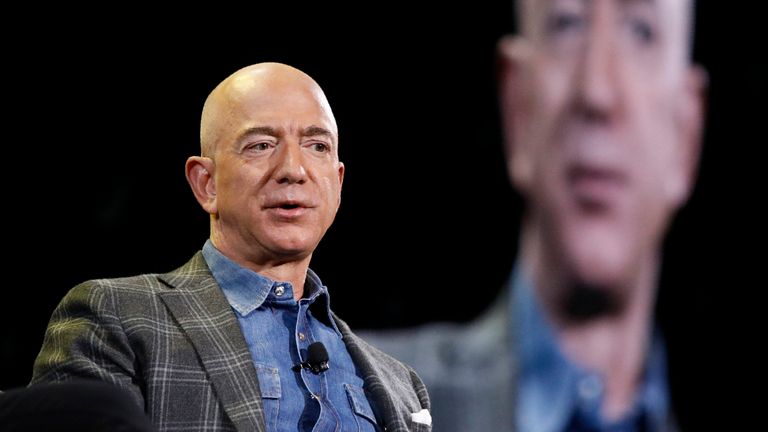Amazon’s profits more than tripled in the first three months of 2021

Amazon’s profit in the first three months of 2021 came in at $8.1bn (£5.8bn) – more than triple what it was in the same period last year.
The online marketplace is among the businesses that have thrived during the various government lockdowns aimed at limiting the spread of the coronavirus.
As many millions of people were forced to stay in their homes, Amazon was relied on for the delivery of supplies.
Since the pandemic began, the business has posted four consecutive record quarterly profits, attracted more than 200 million Prime loyalty subscribers, and recruited more than 500,000 employees to keep up with the demand.
Revenue was up 44% to $108.5bn (£77bn), making Amazon one of just four US companies to have reported quarterly revenue above $100bn (the others being Apple, Exxon Mobil and Walmart).
Sales at Amazon’s ad business were up 77% and its cloud-computing business – which helps power the online operations of Netflix, McDonald’s and others – grew by 32%.
Brian Olsavsky, Amazon’s chief financial officer, said many businesses want to outsource their technology infrastructure to Amazon Web Services.
“We expect this trend to continue as we move into the post-pandemic recovery,” he said.
But COVID-19 has brought extra costs: The company has purchased cargo planes and new warehouses to get its items closer to customers and hasten delivery.
Amazon has also faced activism from within its workforce, recently seeing a unionisation effort defeated at a warehouse in Alabama.
The push for unionisation was the biggest in Amazon’s 26-year history and it was only the second time such an effort from within the business had reached voting stage.
The criticisms of the company’s working environment appeared to prompt Mr Bezos’ admission earlier this month: “We need to do a better job for our employees”.
Neil Saunders, managing director of GlobalData, said Amazon’s weak spot was its physical retail.
“To us, Whole Foods reveals the Achilles’ heel of Amazon: as great as it is at functional factors such as convenience, operational prowess, technological innovation and so forth, it lacks something of a soul when it comes to creating inspiration and excitement.
“This especially applies to physical spaces but is also evident in the very functional nature of its website and its difficulty in gaining traction in some sectors like luxury fashion.
“At one level this doesn’t matter as Amazon’s skills and differentiation is elsewhere.
“However, that weakness one of the big opportunities for other retailers and, as a retailer like Target shows, focusing on things that Amazon isn’t so good at is a recipe for considerable success.”
Source: Read Full Article

